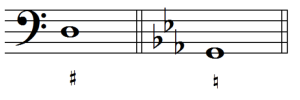Figured Bass and Commercial Chord Symbols
Figured Bass
Figured bass symbols indicate the exact intervals to write or play over a given bass note.
Figured bass considerations:
- Key signatures apply to the numbers written under the bass note
- Accidentals are indicated in the figured bass by a
 (or a number with a slash), a
(or a number with a slash), a  , or a
, or a 
- A
 raises a flat note and a
raises a flat note and a  raises a natural note
raises a natural note - An accidental written without a number alters the 3rd over the bass
- The numbers do not indicate the position of the upper voices. In a
 chord, for example, the 6th does not need to be in the soprano; it can be in any voice.
chord, for example, the 6th does not need to be in the soprano; it can be in any voice. - Unless specified, doubling of notes is based on the type of chord and the voice leading
The examples below are illustrations only and not a complete summary of all possible figured basses.
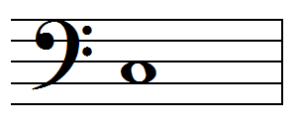 |
If nothing is written under the note, build a root position triad with a 3rd and 5th over the bass note. It is assumed every chord will have a 3rd and 5th. Typically the bass is doubled. |
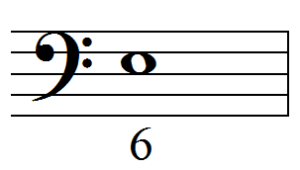 |
Add a 3rd and 6th over the bass note—first inversion triad. (The 3rd is implied.) Typically the bass is not doubled in primary triads, and is doubled in secondary triads. |
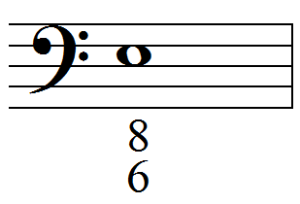 |
Add a 3rd and 6th over the bass note—first inversion triad. (The 3rd is implied.) Double the bass either at the unison or the octave (irregular doubling). |
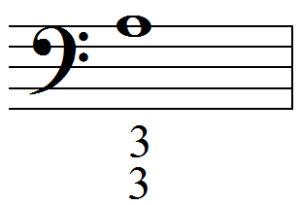 |
Add a 3rd and 5th over the bass note. Double the 3rd over the bass (irregular doubling). |
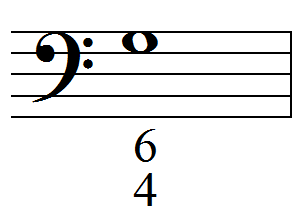 |
Add a 4th and 6th over the bass note—second inversion triad. The bass is doubled. |
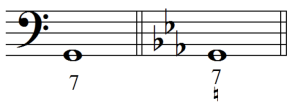 |
Add a 3rd , 5th, and 7th over the bass note—root position seventh chord. (The 5th and 3rd are implied.) Can also be incomplete with omitted 5th and doubled bass. [In the minor example, the natural sign indicates the raised 3rd over the bass note.] |
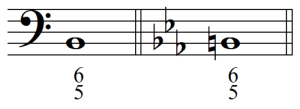 |
Add a 3rd , 5th, and 6th over the bass note—first inversion seventh chord. (The 3rd is implied.) |
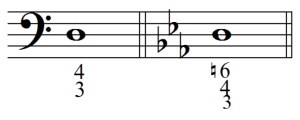 |
Add a 3rd , 4th, and 6th over the bass note—second inversion seventh chord. (The 6th is implied.) |
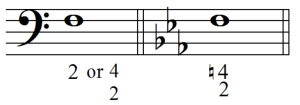 |
Add a 2nd , 4th, and 6th over the bass note—third inversion seventh chord. (The 6th is implied.) |
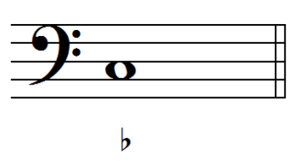 |
Lower the 3rd over the bass note. (The 5th is implied.) Commonly used in modally borrowed chords. |
|
|
Raise the 3rd over the bass note. (The 5th is implied.) Commonly used in the dominant in minor keys and in secondary dominants. |
 |
Raise the 5th over the bass note. (The 3rd is implied.) Commonly used in augmented chords. |
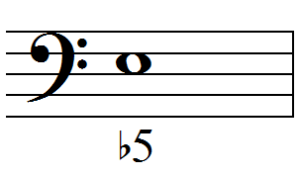 |
Lower the 5th over the bass note. (The 3rd is implied.) Commonly used in modally borrowed chords. |
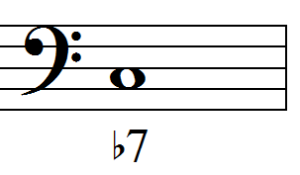 |
Lower the 7th over the bass note. (The 3rd and 5th are implied.) Commonly used in secondary dominant seventh chords. |
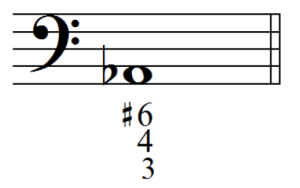 |
Raise the 6th and add a 3rd and 4th . Commonly used in French sixth chords. |
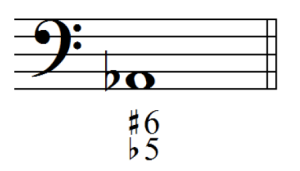 |
Raise the 6th and add a 3rd and a flatted 5th (The 3rd is implied.) Commonly used in German sixth chords. |
Commercial Chord Symbols
Below are the most commonly used commercial chord symbols.
| Chord name | Chord symbol |
| major triad | C |
| minor triad | Cm, Cmi, Cmin, C- |
| augmented triad | C+, C+, Caug |
| diminished triad | Co, Cdim |
| major seventh | Cmaj7 |
| dominant seventh | C7 |
| minor seventh | Cm7 |
| half-diminished seventh | Cm7( |
| diminished seventh | Co7, Cdim7 |
| dominant seventh with a flat fifth | C7( |
| dominant seventh with an augmented fifth | C7( |
| dominant seventh with a major ninth | C9 |
| dominant seventh with a flat ninth | C7( |
| dominant seventh with a thirteenth | C13 |
